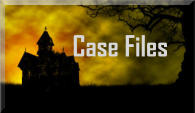HAUNTINGS AND THE HUMAN CONDITION:
WHEN GHOSTS AREN’T THE ANSWER - PAGE 4
SUPERSTITION
“Superstition is foolish, childish, primitive and irrational - but how much does it cost you to knock on
wood?”
- Judith Viorst
Cognitive inhibition also explains why some people are more superstitious than others. The brain has an
internal process that triggers intuitive responses when things around us happen spontaneously. Cognitive
inhibition that is stronger in some people allows them to override that mechanism and control the natural
intuitive process. This means that superstitious beliefs are a kind of default setting in the brain and that it
takes a little extra thinking power to reject them. It might also explain the similarity in creative people and
paranormal believers as the creative process requires a reduction in cognitive inhibition in order to allow the
mind to be open to fresh or unconventional ideas. It does leave an open-ended question in terms of the
paranormal in why some people can be believers in one situation and skeptics in another.
We typically think of superstitions like fear of black cats, walking under ladders, breaking mirrors,
triskaidekaphobia (the fear o the number 13) that will bring on
misfortune or knocking on wood to ensure good fortune. While
stepping on a crack is not any type of guarantee to break your
mother’s back (with apologies to Devo and Mom), where do these
irrational rituals originate from?
Because superstitions have their basis in the supernatural,
many of them are related to religious beliefs. The number 13 for
example has for its rots in The Last Supper, where Jesus dined
with his 12 disciples before his demise and subsequent
resurrection. It was then believed that having 13 people at a
dinner table was bad luck which eventually evolved into anything having to do with that particular number.
This explains why buildings often have no 13th floor, skipping from the 12th directly to the 14th. Numbers
are a source of great anxiety elsewhere around the world as well. Italians fear the roman numeral XVII, or
17, because a rearrangement of the letters can spell out VIXI which means “my life had ended”. As a result,
Italian hotels normally have no room 17. The Cantonese and Koreans fear the number 4 - called
Tetraphobia - because its pronunciation (pinyin) sounds like their word for “death”. The number 1 in their
culture resembles their word for “must”. Therefore the number 14 is met with trepidation because it is
loosely translated to mean “must die”. It is no surprise then that there are no 4th, 13th, 14th, 24th, 34th
etc. floors in Chinese hotels.
While many people believe the Last Supper be an actual event, some superstitions have no basis in any
event real or imagined. Knocking on wood is said to have developed from an early Indo-European tradition
of knocking on trees to invoke the individual spirit that was believed to reside within them in order to
acquire either its blessing or protection. Many other superstitions existing today are rooted in Pagan
religions from centuries past.
There are other superstitions that come not from religion but strange occurrences and coincidences that
might result in misfortune. Take the long-held theater superstition of not whistling backstage. In the early
days of the stage, scenery backgrounds were usually large painted backdrops and stage hands would
whistle to each other to signal when to change them. One can imagine then what might happen if an
audience member were to whistle - which was common - and the chaos or potential danger that could
result. And it likely at some point did, hence the contemporary practice of using headsets to communicate.
The superstition of not having three cigarette smokers share the same match had its origins in the first
World War, where a lit match could identify your position to the enemy if it remained lighted too long. Why
then do these otherwise irrational superstitions endure even when snipers aren’t present? It might be more
about habit and cultural influence than belief.
No one comes into this world with an instinctual understanding not to tempt fate on Friday the 13th.
Like most things we are taught as children it becomes something of a learned behavior that remains with us
even as we grow and become more rational in our thinking. Even if we don’t entertain such thoughts, it still
remains in our subconscious even as we joke about it. Sometimes it’s just easier to knock on wood or not
walk under ladders than resist that urge.
However, there are studies that have shown that belief in certain superstitions can boost performance
and confidence in one’s abilities. A lucky charm for example might instill more comfort in your ability to
pass a test or ace an interview. A ballplayer wearing a certain pair of socks might have a great day at the
plate and continue to wear them as a talisman of sorts in an effort to repeat their performance and that
level of faith might just work to their advantage as a sort of psychological placebo. Well wishes from others
in the form of “keeping their fingers crossed” for you also can have some ancillary benefits in your
knowledge that people are pulling for you to succeed. In sum total, it creates the illusion you have some
greater control over events.
I-M-H-O
I-D-E-O-M-O-T-O-R
“People have told me 'Betty, Facebook is a great way to keep in touch with old friends...' .. At my age, if I
wanted to keep in touch with old friends, I'd need a Ouija board.”
- Betty White
Among all the topics of debate in the paranormal world, perhaps none inspires more emotional response
and divisive rhetoric than that of the Ouija Board. The otherwise benign board game has come under fire
for decades now and very unjustly in my opinion. Many of those opinions as well as a history of the board
can be found in “The Ouija Board - Demystified” (full article here).
One area that was covered concerns the manipulation of the “dowsing” device included in the game
called the planchette and how the subconscious mind and not the spirit world is likely responsible for a vast
majority of the information gleaned from the game. (And yes, it is nothing more than a board game).
“
In 1852 by physician and physiologist William Benjamin Carpenter asserted that human beings
are subject to involuntary movements and reactions that occur without any type of conscious will or
effort. In effect, it is a dissociative state where consciousness is separated from normal cognitive or
motor functions. This became known as the "Ideomotor Effect" that states even those who declare
their innocence and put forth their best effort not to initiate any physical action to cause an equal
reaction can be victims of their own subconscious. This also extends to human emotions as certain
images or interactions can trigger emotional responses of anger, sadness or joy. One year after
Carpenter's conclusions were published, a physicist named Michael Faraday applied this theory to the
theme of spiritualism. Among the objects of interest - like crystal balls - was "table tipping". This is
accomplished when a group sits in a circle around a table (usually, but not always three-legged) and
with the fingers of both hands placed on it in plain sight, palms down, calls upon the spirits present to
rock and even levitate the table from its normal stationary position using the collective energy of the
participants to do so. This was once considered to be state-of-the-art spirit communication. Through a
series of experiments, Faraday concluded that the movement of the table were not caused by spirit
interaction but by the Ideomotor Effect.” (from The Ouija Board - Demystified)
There is a simple test to prove or disprove subconscious forces are at work when people perform a
Ouija board session. Seat two or more people at the board and allow them to conduct the session as
they normally would. Log the results of the session to determine if they have received what they
believe to be credible responses. Then repeat the session, but this time blindfold the users and spin
the board so they have no way of knowing which direction it is facing. Should the Ouija party still
receive clear and cogent answers with names or places, then we might be on to something, but the
more likely result will be a whole lot of gibberish being spelled out.
BEHAVIORAL CONTAGION
“It’s the old adage, “If your friends jumped off a bridge, would you jump too?” Apparently the answer
is yes.”
- Suzanne Young
The Ouija board was created to be nothing more than the harmless diversion that it was for over a
century as families, adolescents and couples pitching woo indulged themselves in the possibility that
the board was a conduit to the spirit world and they could learn what the future holds for them by
asking it innocuous questions like, “Who will I marry?” or “Will I be rich?” Sometimes people would
use it to contact deceased friends and relatives or ghosts who might be lingering around the property,
but it took a wildly successful and disturbing movie called The Exorcist to take it into the realm of
darkness and fear. Ever since young Regan MacNeil summoned an imaginary demon named “Captain
Howdy”, the Ouija board has become the divining tool of choice for many paranormal investigators,
TV celebrities, new-age psychics and thrill seekers who wish to take a walk on the wild side. Mostly
employed for shock value, it has become symbolic of everything bad that can result when you use it
to “open a portal” to another dimension and invite spirits into our world.
That attitude has maintained its staying power as millions insist they have had troubling or in
some cases terrifying experiences when using it. “I believe in it because
(insert horrifying experience) happened to me” is a familiar refrain
which fails to take into consideration that the state of mind or intent of
the user is an important variable. How else can one explain why so
many people choose to use it only in spooky, dark, reputedly haunted
places, surrounding it with lit candles, reciting prayers and performing
opening and closing rituals before and after each use? Is it really that
hard then to accept that many users have already assumed a vulnerable
psychological state before things even get started? Even some who have
never used one and lack any personal frame of reference with it
nonetheless steer clear of it, perhaps not fully believing in its “power”,
but wishing not to tempt fate. To others, the use of the board during public gatherings plays on these
preconceived notions and thus creates an air of uncertainty and trepidation that increases the
entertainment factor exponentially. If nothing else, the effect The Exorcist had on an entire
population’s culture (even on those who were not yet born at the time of its release) is extraordinary
as it molded people’s beliefs and attitudes toward an otherwise harmless amalgamation of cardboard
and plastic.
Some of this may be attributed to something called behavioral contagion which is social behavior
that is initiated by one person and mimicked by others who are either sharing the same space or have
been influenced by media coverage that describes the behavior of that person. It was initially
introduced as a means to explain unruly behavior by people in crowds by Gustave Le Bon in 1895.
There are subsets of this type of behavior and they can be applied to sightings and reports of ghosts
and hauntings, so here are common examples of influenced behavior through the lens of the
paranormal:
REDUCED RESTRAINTS - A woman who does not
want to be ridiculed for her belief in the paranormal is
is touring a classic Victorian-style home with a group
of strangers. Not sure of the level of belief the others
hold, she remains very reserved, not wanting to be
the subject of derision or rejection by bringing up the
prospect of the home being haunted. But then the
tour guide begins to tell the story of seeing a ghstly
woman in white walking down the hall and finding no
one there after they’ve gone to check. The guide has
now exhibited the type of behavior the visitor aspires to, so now talk of the house being haunted can
occur without restraint. By expressing their belief in the paranormal, the guide has gained a perceived
advantage over anyone in the group who is also enthusiastic about the subject but were reluctant to
speak of it. With all self-imposed constraints lifted, the guests now voice their own opinions, ask
questions and perhaps tell their own stories in order to nullify any artificial advantage the guide had
over them.
PSYCHOLOGICAL INFLUENCE - A group of 8 people who
share a belief in the paranormal have gathered at a
reputedly haunted location for the purpose of
investigating the location with the prospect having a
personal or shared experience. They all share the feeling
of excitement and anticipation for the night ahead and are
well-aware of prior claims of supernatural occurrences in
the building. They have researched its history and have
come armed with a host of equipment to document and
measure potential activity and all are in the presence of like-minded people sharing similar beliefs and
expectations. At one point someone in their party claims to see a shadowy figure in one of the rooms.
Another reports feeling a cold spot in a different room and a third says they have been touched on the
arm by something unseen. The others have not had any experiences at that time and perhaps even
begin to entertain doubts of their prospect of having one, but conclude their best hope is to
investigate the same areas where their colleagues had theirs. Soon, one claims to also be seeing a
shadowy figure and that sighting is confirmed by someone with them. In short order a third person
joins them and all three become convinced they are watching the shadowy figure move about the
room. By the end of the evening all 8 people have had experiences and declare the location to be
“extremely active” as they part ways to review any data they may have collected. Did they truly all
have a legitimate paranormal experience or - like those who hedge their bets on using the Ouija
board - have they fallen prey to a combination of expectation and psychological influence from their
companions in order to eliminate any perceived disadvantage they had relative to others in the group.
CONFLICT RESOLUTION - An objective, skeptical
individual joins a group of enthusiastic believers on an
investigation. During the course of the evening as
others begin to relate their personal experiences, the
objective investigator takes them at face value not
doubting their veracity but not totally relinquishing any
concept of rationality or reasoning. As the evening
progresses, the rest of the group begins to jump to
conclusions and every sound, sight or feeling results in
a breathless declaration that something paranormal is
taking place. People excitedly watch EMF meters jump
0.5 of a milligauss or ambient thermometers waver by a tenth of a degree and abandon any normal
explanation for the variances in favor of a supernatural occurrence. As the objective person sits there
surrounded by an excited crowd, perhaps they venture a guess that the EMF readings are not that
significant and things like convection (air flow) are responsible for the temperature fluctuation. He
now encounters silence or perhaps even resistance toward his input from others insisting nothing
normal can possibly be happening here and doing so with an air of contempt toward any suggestion
to the contrary. It becomes clear that their good time is in danger of being ruined by a paranormal
blasphemer. The dissenter now comes to a crossroads of sorts: Does he stick to his position and
remain vocal in his objection to reading much into what’s happening? Does he excuse himself from
the room and allow his own resolve to ruin his night? Does he just remain polite and bite his tongue
allowing false positives and questionable observations to continue? Or does he start to just go along
with the crowd in order to fit in? Often, people will choose the path of least resistance in order to
avoid any further conflict in no small part because its easier to assimilate oneself into the group
mentality than endure disapproval for a contrary point of view. This remains a real issue in the
paranormal field where those with dissenting opinions are too easily dismissed as being “haters”,
“envious” and self-absorbed “experts” simply for asking legitimate questions and as a result some
very poor practices continue unabated.
POSITIVE MODELING - You are attending
an event where a noted paranormal
personality is on hand to participate in
the investigation. Perhaps this notoriety
is the result of their appearance(s) on a
TV show or other form of media. Maybe
they are considered to be more of a local
celebrity or at least someone who has
gained a solid reputation for their
knowledge and experience over a period
of years. In such instances, this person is
accepted by the group to be the “alpha”
investigator on this given night. Because of their perceived proficiency and high profile, you begin to
see that their approach and observations seem to resonate with the attendees on a more intense
scale than one would normally expect for one individual. Soon many (if not all) in the group begin to
mimic the alpha’s techniques and style and start to confirm common experiences with them. At this
time you cannot honestly validate any of them, but the amount of people who do begins to grow
exponentially until you either: a) start to question the sincerity of the shared claims or, b) feel a social
urge for conformity and thus falsely claim you are having the same experiences. The alpha - because
of their perceived status and the desire of some to court favor with them - has (perhaps even
inadvertently) triggered a similar form of conflict resolution within the group.


































